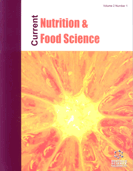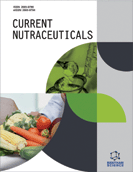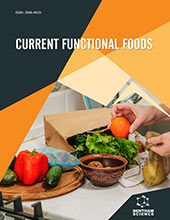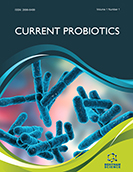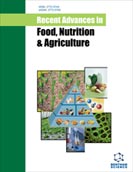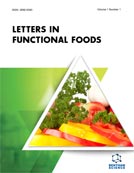Abstract
Background: This study evaluated the antioxidant activities and alleviation of insulin resistance of three Sweet Potato Leaf Extracts (SPLE) with 70% ethanol prepared by lyophilization and oven-drying 40 °C.
Methods: Content of total phenols, flavonoids, total anthocyanins, and anthocyanidin composition was analyzed. Moreover, DPPH radicals, Trolox equivalent antioxidant capacity, and ferrous ironchelating activity were determined. Cell culture and viability test and effect of plant extracts on glucose uptake were also studied.
Results: For total phenol, flavonoid, and anthocyanin contents, both CYY98 and TN64 showed better antioxidant contents than did CN1927. Anthocyanidin compositions of cyanidin and malvidin were both rich in lyophilized CYY98. The 40 °C-dried CN1927 had significantly lower DPPH radical-scavenging activity than the other tested samples. Red leaves showed a higher ABTS-scavenging efficacy than CN1927 and CYY98 for each processing method. The 40 °C dried CYY98 had the highest iron-chelating capacity. EC50 values of the iron-chelating activity of all lyophilized leaves of each variety were higher than those 40 °C dried leaves. The highest improvement in insulin-resistant FL83B cells was achieved by 40 °C drying of TN64. Relative expression levels of the insulin receptor and IR substrate-1 in hepatocyte cells significantly increased by lyophilization of CN1927, 40 °C drying of TN64, and lyophilization of CYY98. All SPLEs treatments significantly increased expressions of glucose transporter-2 relative to that of a tumor necrosis factor-α -treated group.
Conclusion: The lyophilized CN1927 and CYY98 SPLEs, and 40 °C-dried TN64 can improve TNF-α -induced insulin resistance by activating insulin signaling, thus resulting in increased glucose uptake.
Keywords: Glucose uptake, sweet potato leaf extracts, antioxidant activity, total phenols, flavonoids, sweet potato leaf extracts (SPLE).
Graphical Abstract
Current Nutrition & Food Science
Title:Antioxidant Properties and Glucose Uptake Effect of Ethanol Extracts from Different Sweet Potato Leaves Prepared by Lyophilization and Oven- Drying at 40 °C
Volume: 13 Issue: 3
Author(s): Kuan-Hung Lin, Penk-Yeir Low, Pi-Yu Chao, Ming-Chih Shih*, Ming-Chang Chiang, Yung-Chang Lai and Swi-Bea Wu*
Affiliation:
- Department of Nutrition and Health Sciences, Chinese Culture University, No. 55, Hwa-Kang Rd., Yang-Ming Shan, Taipei 11114,Taiwan
- Graduate Institute of Food Science and Technology, National Taiwan University, Sec. 4, Roosevelt Rd., Taipei 10617,Taiwan
Keywords: Glucose uptake, sweet potato leaf extracts, antioxidant activity, total phenols, flavonoids, sweet potato leaf extracts (SPLE).
Abstract: Background: This study evaluated the antioxidant activities and alleviation of insulin resistance of three Sweet Potato Leaf Extracts (SPLE) with 70% ethanol prepared by lyophilization and oven-drying 40 °C.
Methods: Content of total phenols, flavonoids, total anthocyanins, and anthocyanidin composition was analyzed. Moreover, DPPH radicals, Trolox equivalent antioxidant capacity, and ferrous ironchelating activity were determined. Cell culture and viability test and effect of plant extracts on glucose uptake were also studied.
Results: For total phenol, flavonoid, and anthocyanin contents, both CYY98 and TN64 showed better antioxidant contents than did CN1927. Anthocyanidin compositions of cyanidin and malvidin were both rich in lyophilized CYY98. The 40 °C-dried CN1927 had significantly lower DPPH radical-scavenging activity than the other tested samples. Red leaves showed a higher ABTS-scavenging efficacy than CN1927 and CYY98 for each processing method. The 40 °C dried CYY98 had the highest iron-chelating capacity. EC50 values of the iron-chelating activity of all lyophilized leaves of each variety were higher than those 40 °C dried leaves. The highest improvement in insulin-resistant FL83B cells was achieved by 40 °C drying of TN64. Relative expression levels of the insulin receptor and IR substrate-1 in hepatocyte cells significantly increased by lyophilization of CN1927, 40 °C drying of TN64, and lyophilization of CYY98. All SPLEs treatments significantly increased expressions of glucose transporter-2 relative to that of a tumor necrosis factor-α -treated group.
Conclusion: The lyophilized CN1927 and CYY98 SPLEs, and 40 °C-dried TN64 can improve TNF-α -induced insulin resistance by activating insulin signaling, thus resulting in increased glucose uptake.
Export Options
About this article
Cite this article as:
Lin Kuan-Hung, Low Penk-Yeir, Chao Pi-Yu, Shih Ming-Chih*, Chiang Ming-Chang, Lai Yung-Chang and Wu Swi-Bea*, Antioxidant Properties and Glucose Uptake Effect of Ethanol Extracts from Different Sweet Potato Leaves Prepared by Lyophilization and Oven- Drying at 40 °C, Current Nutrition & Food Science 2017; 13 (3) . https://dx.doi.org/10.2174/1573401313666170222120700
| DOI https://dx.doi.org/10.2174/1573401313666170222120700 |
Print ISSN 1573-4013 |
| Publisher Name Bentham Science Publisher |
Online ISSN 2212-3881 |
 14
14 1
1
- Author Guidelines
- Bentham Author Support Services (BASS)
- Graphical Abstracts
- Fabricating and Stating False Information
- Research Misconduct
- Post Publication Discussions and Corrections
- Publishing Ethics and Rectitude
- Increase Visibility of Your Article
- Archiving Policies
- Peer Review Workflow
- Order Your Article Before Print
- Promote Your Article
- Manuscript Transfer Facility
- Editorial Policies
- Allegations from Whistleblowers
- Announcements
Related Articles
-
Editorial (Thematic Issue: Endocrine Disorders and Cognitive Function in the Elderly)
Recent Patents on Endocrine, Metabolic & Immune Drug Discovery (Discontinued) Hormones and their Receptors Bridge Fat and Bone Metabolisms
Current Signal Transduction Therapy Obesity and Body Composition in Man and Woman: Associated Diseases and the New Role of Gut Microbiota
Current Medicinal Chemistry Management of Hyperglycemia in Gestational Diabetes Mellitus
Recent Patents on Endocrine, Metabolic & Immune Drug Discovery (Discontinued) Editorial (Thematic Issue: Targeting Vascular Calcification: Up-Date)
Current Pharmaceutical Design Challenging the Evidence Based Medicine Principles Among Clinical Obesity Treatments
Current Clinical Pharmacology Role of Advanced Glycation End Products in Diabetic Neuropathy
Current Pharmaceutical Design Adverse Reactions and Pathogen Safety of Intravenous Immunoglobulin
Current Drug Safety Marine Algae As A Prospective Source For Antidiabetic Compounds – A Brief Review
Current Diabetes Reviews Microvascular Alterations in Hypertension and Vascular Aging
Current Hypertension Reviews Incretin Based Therapy in the Management of Steroid Induced Diabetes Mellitus
Current Diabetes Reviews Ambulatory Blood Pressure and Diabetes: Targeting Nondipping
Current Diabetes Reviews Molecular Imaging and Targeted Drug Delivery Using Albumin-Based Nanoparticles
Current Pharmaceutical Design Role of Oxidative Stress and Mitochondrial Dysfunction in Skeletal Muscle in Type 2 Diabetic Patients
Current Pharmaceutical Design Endothelin-1 and Human Platelets
Current Vascular Pharmacology Advances in Peptide Pharmaceuticals
Current Pharmaceutical Biotechnology Novel Vitreous Modulators for Pharmacologic Vitreolysis in the Treatment of Diabetic Retinopathy
Current Pharmaceutical Biotechnology Association of Dietary Patterns with Glycated Hemoglobin <i>(HbA1c)</i> among Type 2 Diabetes Patients: A Cross-sectional Study
Current Nutrition & Food Science Signaling Pathways Involved in Physiopathology of Pancreatic β -Cells
Recent Patents on Endocrine, Metabolic & Immune Drug Discovery (Discontinued) Formulation Approaches to Overcome Biopharmaceutical Limitations of Inhaled Peptides/Proteins
Current Pharmaceutical Design


